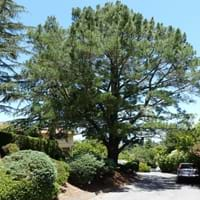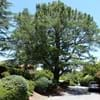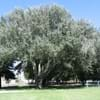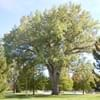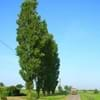Life Span
Perennial
Perennial
Type
Tree
Bulb or Corm or Tuber
Origin
California, Mexico
Southern Africa, South Africa
Types
Not Available
Cusick's camas, large camas
Number of Varieties
Not Available
Habitat
Not Available
meadows, moist forests, Open Plains
USDA Hardiness Zone
7-9
8-10
AHS Heat Zone
9-7
Not Available
Sunset Zone
H1, 8, 9, 14, 15, 16, 17, 18, 19, 20, 21, 22, 23, 24
21,22
Habit
Upright/Erect
Rosette/Stemless
Flower Color
Not Available
White, Yellow, Red, Blue, Purple, Pink, Lavender, Violet
Flower Color Modifier
Bicolor
Bicolor
Fruit Color
Not Available
Not Available
Leaf Color in Spring
Dark Green
Green
Leaf Color in Summer
Dark Green
Light Green
Leaf Color in Fall
Dark Green
Several shades of Green
Leaf Color in Winter
Dark Green
Light Green
Leaf Shape
Pinnate
Long slender
Plant Season
Spring, Summer, Fall
Spring, Winter
Sunlight
Full Sun, Partial Sun
Full Sun, Partial Sun
Growth Rate
Not Available
Medium
Type of Soil
Clay, Loam, Sand
Loam
The pH of Soil
Acidic, Neutral, Alkaline
Acidic, Neutral
Soil Drainage
Well drained
Well drained
Bloom Time
Not Available
Early Spring, Spring, Late Winter, Indeterminate
Tolerances
Drought
Black Walnut Toxicity, Rabbit, Shade areas
Where to Plant?
Ground
Container, Ground, Pot
How to Plant?
Stem Planting
chipping, Offsets, scooping, Twin scaling, Vegetative
Plant Maintenance
Medium
Low
Watering Requirements
Allow soil to be completely dry in between waterings, Requires watering in the growing season, Water less during winter
Medium
In Summer
Lots of watering
Lots of watering
In Spring
Moderate
Moderate
In Winter
Average Water
Average Water
Soil pH
Acidic, Neutral, Alkaline
Acidic, Neutral
Soil Type
Clay, Loam, Sand
Loam
Soil Drainage Capacity
Well drained
Well drained
Sun Exposure
Full Sun, Partial Sun
Full Sun, Partial Sun
Pruning
Prune in late summer or fall, Remove dead or diseased plant parts
Remove damaged leaves, Remove dead branches, Remove dead leaves
Fertilizers
very little fertilizers at a time
All-Purpose Liquid Fertilizer, General garden fertilizer, Time release fertilizer
Pests and Diseases
Monterey pine midge, Monterey pine needleminer, Monterey pine scale, Monterey pine shoot moth, Monterey pine tip moth, Monterey pine weevil, Needle rust, Needlecast disease, Pine needle scale, Pinewood nematode, Pitch canker, Red blotch, Red turpentine beetle, Root rot, Spider mites, Western gall rust
Pests and diseases free
Plant Tolerance
Drought
Black Walnut Toxicity, Rabbit, Shade areas
Flower Petal Number
Not Available
Single, Double, Semi-Double
Fragrant Bark/Stem
Yes
No
Foliage Texture
Fine
Medium
Foliage Sheen
Matte
Glossy
Attracts
Not Available
Insects
Allergy
Asthma, Respiratory problems, Skin irritation
Asthma
Aesthetic Uses
Showy Purposes
Bouquets, Cottage Garden
Beauty Benefits
Not Available
For treating wrinkles, Remove blemishes, Skin Problems
Environmental Uses
Air purification, Shadow Tree
Air purification, Forms dense stands, Very little waste
Medicinal Uses
Not Available
Leucoderma, Urinary problems
Part of Plant Used
Sap, Wood
Bulbs, Root
Other Uses
used for making roof trusses, poles, joists, piles, Used for woodware, Used in construction, Used in Furniture
Animal Feed, Decoration Purposes, Showy Purposes
Used As Indoor Plant
No
Yes
Used As Outdoor Plant
Yes
Yes
Garden Design
Feature Plant, Screening / Wind Break, Shade Trees
Bedding Plant, Container, Cutflower, Mixed Border, Rock Garden / Wall
Botanical Name
PINUS radiata
Hyacinthus orientalis
Common Name
Monterey Pine
Hyacinth, common hyacinth, garden hyacinth, dutch hyacinth
In Hindi
मोंटेरी पाइन
ह्यचीन्थ
In German
Monterey-Kiefer
Hyazinthe
In French
Monterey Pine
jacinthe
In Spanish
El pino de Monterrey
jacinto
In Greek
Monterey Pine
υάκινθος
In Portuguese
Monterey Pine
jacinto
In Polish
Monterey Pine
hiacynt
In Latin
Pine
et hyacinthinas,
Phylum
Pinophyta
Magnoliophyta
Class
Pinopsida
Liliopsida
Family
Pinaceae
Liliaceae
Clade
Not Available
Angiosperms, Monocots
Tribe
Not Available
Not Available
Subfamily
Pinoideae
Scilloideae
Number of Species
Not Available
Importance of Monterey Pine and Wild Hyacinth
Want to have the most appropriate plant for your garden? You might want to know the importance of Monterey Pine and Wild Hyacinth. Basically, these two plants vary in many aspects. Compare Monterey Pine and Wild Hyacinth as they differ in many characteristics such as their life, care, benefits, facts, etc. Every gardener must at least have the slightest clue about the plants he wants to plant in his garden. Compare their benefits, which differ in many ways like facts and uses. The medicinal use of Monterey Pine is Not Available whereas of Wild Hyacinth is Leucoderma and Urinary problems. Monterey Pine has beauty benefits as follows: Not Available while Wild Hyacinth has beauty benefits as follows: Not Available.
Compare Facts of Monterey Pine vs Wild Hyacinth
How to choose the best garden plant for your garden depending upon its facts? Here garden plant comparison will help you to solve this query. Compare the facts of Monterey Pine vs Wild Hyacinth and know which one to choose. As garden plants have benefits and other uses, allergy is also a major drawback of plants for some people. Allergic reactions of Monterey Pine are Asthma, Respiratory problems and Skin irritation whereas of Wild Hyacinth have Asthma respectively. Having a fruit bearing plant in your garden can be a plus point of your garden. Monterey Pine has no showy fruits and Wild Hyacinth has no showy fruits. Also Monterey Pine is not flowering and Wild Hyacinth is not flowering . You can compare Monterey Pine and Wild Hyacinth facts and facts of other plants too.
